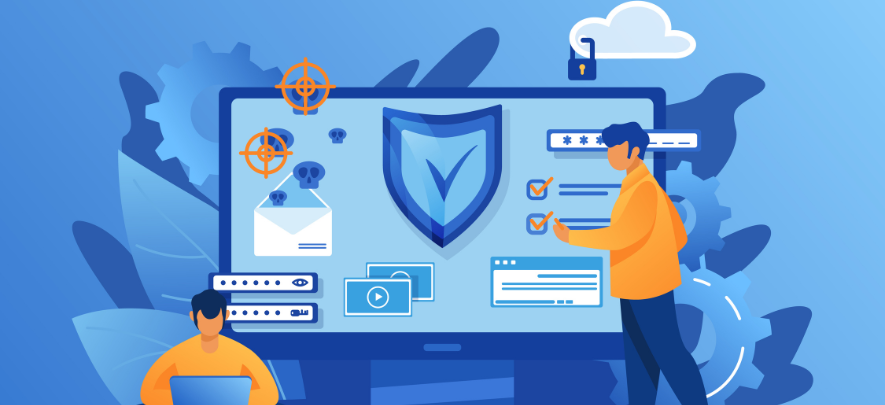Cyber Security Best Practices for Small Businesses

Digital & Technology
102 week ago — 6 min read
Small businesses are increasingly vulnerable to cyber threats in today's digital landscape. Due to the rapid advancement of technology, the risk of data breaches, hacking attempts, and various other malicious activities has experienced a substantial increase. As a result, it has become imperative for small businesses to place a high priority on cyber security and adopt best practices to safeguard sensitive information. This article provides comprehensive guidance on cybersecurity best practices that small businesses can adopt to safeguard their digital assets.
Significance of Cyber Security
In an interconnected world where businesses rely heavily on digital infrastructure, cyber security is critical in maintaining operational integrity and safeguarding customer trust. Small businesses often underestimate the potential impact of cyber-attacks, assuming they are not attractive targets. However, studies have shown that cybercriminals frequently target small businesses due to their weaker security measures, making them easy prey.
Conduct a Risk Assessment
Before implementing any cyber security measures, conducting a thorough risk assessment is essential. This process helps identify vulnerabilities and potential threats specific to your business. Start by evaluating your digital infrastructure, including hardware, software, and network systems. Identify weaknesses such as outdated software, weak passwords, or unsecured networks. Understanding your vulnerabilities will enable you to prioritize and address them effectively.
Secure Network Infrastructure
A secure network infrastructure forms the foundation of a robust cybersecurity system. Implement the following practices to fortify your network:
1. Firewall Protection
Install and maintain a reliable firewall to filter incoming and outgoing network traffic. A firewall is a barrier between your internal network and external threats, preventing unauthorized access and filtering potentially harmful data packets.
2. Regular Software Updates
It is essential to ensure that all software, including operating systems and applications, remains up to date. Software updates frequently incorporate security patches designed to fix known vulnerabilities. Enabling automatic updates ensures that your systems are protected against the latest threats.
3. Strong Password Policies
Enforce strong password policies across your organization. Encourage employees to use unique, complex passwords and change them regularly. To add an extra layer of security, implement multi-factor authentication (MFA) wherever possible.
4. Wireless Network Security
Secure your wireless network with strong encryption (WPA2 or higher) and change the default administrator credentials. Disable guest networks or set up a separate network for visitors to minimize the risk of unauthorized access.
Employee Awareness and Training
Often the weakest link in the cyber security chain are employees. Educating and training your staff on best practices to minimize the risk of human error is crucial. Consider the following:
1. Security Awareness Programs
Develop and conduct regular security awareness programs to educate employees about common cyber threats, such as phishing attacks, social engineering, and malware. Teach them to identify suspicious emails, avoid clicking on unknown links, and promptly report any security incidents.
2. Role-Based Access
Implement a role-based access control system to ensure that employees have access only to the information necessary for their job functions. Limiting access rights reduces the potential damage in case of a breach or unauthorised access.
3. Incident Response Plan
Create a comprehensive incident response plan that outlines the steps to be taken during a security breach. This plan should include protocols for reporting incidents, isolating affected systems, and notifying the appropriate authorities.
Data Backup and Recovery
Regularly backing up your data is crucial in mitigating the impact of a cyber-attack. Implement the following practices to ensure the integrity and availability of your data:
1. Automated Backups
Set up automated backup systems to regularly create copies of your critical data. Store backups in secure offsite locations or use cloud-based backup solutions for added redundancy.
2. Test Backup and Recovery
Periodically test your backup and recovery processes to ensure data can be restored effectively. This practice helps identify any potential issues and enables you to refine your recovery strategies.
Conclusion
Implementing robust cyber security practices is essential for small businesses to protect their digital assets and maintain the trust of their customers. By conducting a risk assessment, securing their network infrastructure, educating employees, and implementing data backup and recovery strategies, small businesses can significantly reduce their vulnerability to cyber threats. Remember, cyber security is an ongoing process that requires continuous monitoring and adaptation to stay one step ahead of cybercriminals. Prioritize protecting your business and customer data, and you will be well on your way to safeguarding your small business from cyber threats.
Also read: Is your company prepared to see and address unimaginable threats?
To explore business opportunities, link with me by clicking on the 'Connect' button on my eBiz Card.
Image source: Freepik
Disclaimer: The views and opinions expressed in this article are those of the author and do not necessarily reflect the views, official policy or position of GlobalLinker.
Posted by
Gaurav Naginkumar ManiarAs an experienced entrepreneur and web security expert, I have a passion for creating innovative solutions that help businesses protect their online assets. My latest venture,...
View Gaurav 's profile
SME Inspirations
Most read this week
Trending
What is BRC in Export Business?
Export Sector 1 week ago












Comments
Share this content
Please login or Register to join the discussion